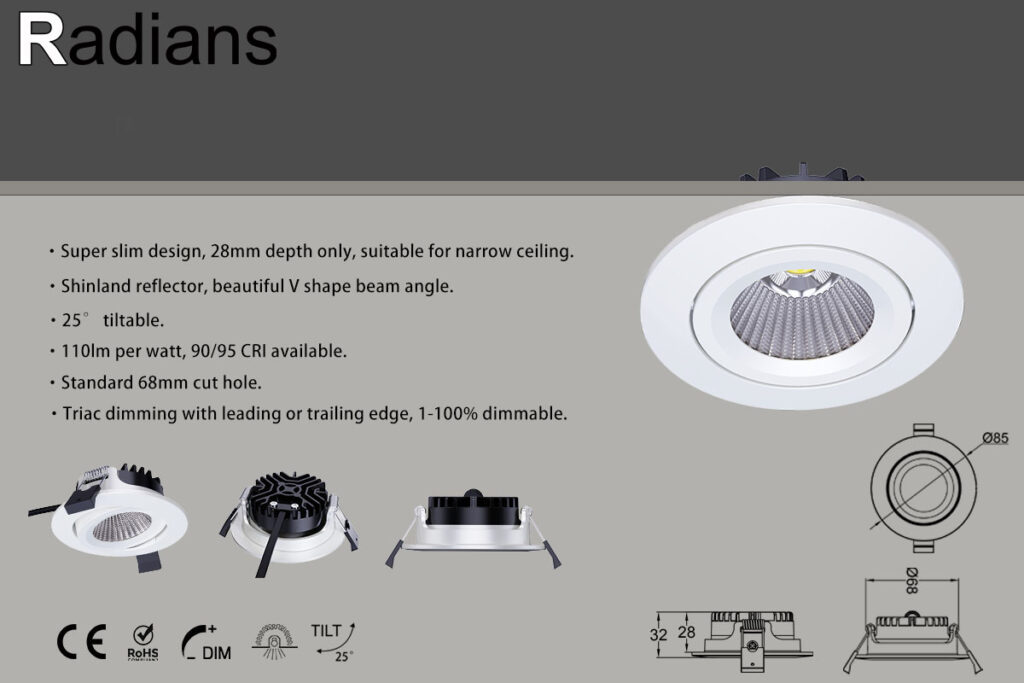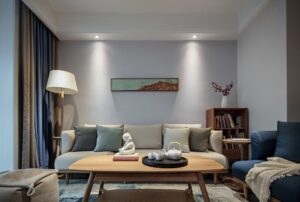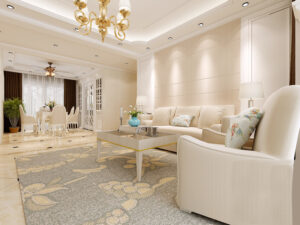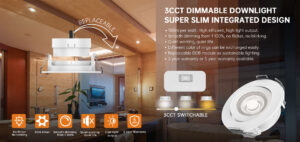Creating the ideal living room lighting environment goes beyond selecting the right furniture and décor; lighting plays a crucial role in setting the mood and enhancing comfort. While many people rely solely on ceiling lights, a thoughtful combination of direct and indirect light sources can significantly elevate both the aesthetics and ambiance of your living space. This guide presents practical ideas to maximize your living room lighting, along with recommendations for fixtures that can help achieve your vision.
Key Points of Living Room Lighting
- Establishing a Solid Foundation: Basic Lighting
- Creating Light Zones: Wall Sconces and Reading Lamps
- Adding Decorative Lighting: Your Personal Comfort Space
- Choosing the Right Fixtures for Your Living Room
- Smart Control of Living Room Lighting: Need Assistance?
Establishing a Solid Foundation: Basic Lighting
Just like any other room, effective basic lighting is essential in the living room. Research indicates that while kitchens and bathrooms benefit from bright environments of about 300 lumens per square meter, a comfortable brightness level in the living room is around 100 lumens per square meter. To determine how many fixtures you need, refer to our indoor lighting guide.
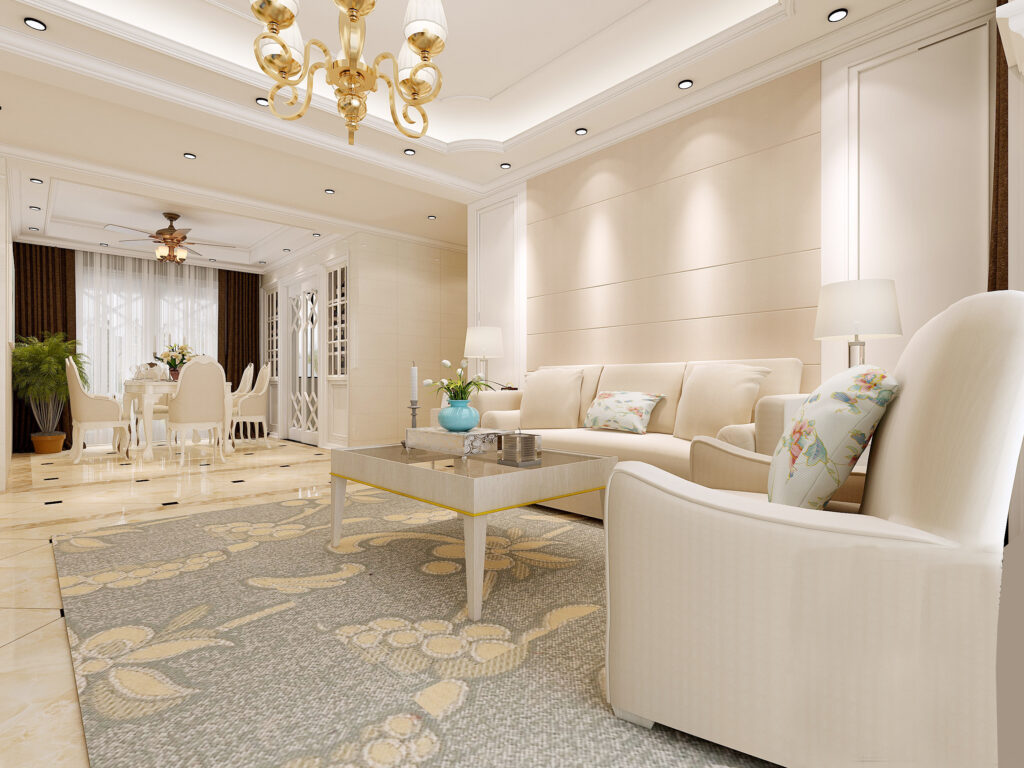
Types of Fixtures for Basic Lighting
Recessed Spotlights: A long-time favorite for living rooms, placing spotlights centrally can effectively illuminate the entire space.
Chandeliers: If your power outlet is centrally located, a chandelier can be an excellent choice for basic lighting. Opt for designs with glass or light-colored fabric shades to diffuse light evenly; avoid concrete or wooden shades that direct light downward.
LED Panels: These flat, ceiling-mounted fixtures are a great alternative if you lack a drop ceiling. Many LED panels come with three-level dimming options controlled by standard wall switches, providing versatility in lighting settings.
Track Systems: For rooms where the power outlet isn’t centrally located, track systems like URail or NanoRail allow you to direct light where it’s needed most, offering flexibility in design.

Creating Light Zones: Wall Sconces and Reading Lamps
Once basic lighting is established, it’s time to enhance specific areas with additional fixtures. Focus on spaces where you and your family spend time, such as reading nooks or relaxation areas.
- Floor Lamps: Ideal for reading corners, ensure they emit direct, glare-free light aimed at your book. A color temperature of around 3,000 Kelvin is typically sufficient; anything brighter may require neutral white light at about 5,300 Kelvin.
- Wall Sconces: In smaller living rooms, wall-mounted reading lamps can be both functional and aesthetically pleasing.
- Pendant Lights: These create a warm atmosphere around coffee tables with their beautiful downward light cones. Choose opaque shades to prevent glare.
Adding Decorative Lighting: Your Personal Comfort Space
While basic and area lighting serve functional purposes, accent lighting adds character and warmth to your living room.
Indirect Lighting Effects
Indirect lighting positively influences mood by reflecting light off walls or ceilings rather than shining directly into the room. This creates a soft ambiance that’s inviting and pleasant.
- LED Strip Lights: Install these in ceiling recesses or under furniture to create stunning indirect lighting effects.
- Accent Lamps: Use table lamps to highlight cherished decorations or family photos, drawing attention to their beauty.
- Spotlights and Picture Lights: These can showcase art pieces or collectibles effectively, replicating gallery-style illumination within your own home.
- Plant Lights: These fixtures not only illuminate small plants but also serve as decorative elements in any space
Enhancing Indoor Lighting Solutions with Radians
Radians is a leading indoor lighting fixture manufacturer specializing in downlights, panel lights, and track lights. As a design-driven enterprise, Radians boasts a team with extensive experience in new product development, ensuring innovative solutions for clients.
Innovative Manufacturing and Quality Control
Located in Foshan City, Radians operates a state-of-the-art manufacturing facility that prioritizes innovation, quality control, efficiency, and sustainable practices. The company is committed to meeting client expectations by delivering exceptional results consistently. Radians’ research and development team collaborates closely with clients to create customized products that meet unique specifications, providing comprehensive support throughout the project lifecycle.
Expert Support for Product Development and Optimization
If you face challenges in developing new products, upgrading existing ones, or optimizing product performance while reducing costs, Radians’ customer service team is available to assist. This support ensures that clients receive tailored solutions to enhance their product offerings.
Key Strengths of Radians
– Experienced Team: Rich experience in new product development.
– Innovative Manufacturing: Focus on quality, efficiency, and sustainability.
– Client-Centric Approach: Comprehensive support throughout the project lifecycle.
– Customized Solutions: Products tailored to meet unique client specifications.
Choosing the Right Fixtures for Your Living Room
Ideally, plan your entire living room concept around LED lighting due to its energy efficiency—consuming up to 80% less power compared to halogen bulbs or traditional incandescent lights while offering a long lifespan that recoups initial investments quickly.
Considerations for Light Color and Temperature
- Warm White Light: For basic lighting, choose fixtures with a color temperature between 2,700 and 3,000 Kelvin; this closely resembles traditional bulbs and is widely preferred.
- Task Lighting: For areas requiring focused work, opt for neutral white light around 5,300 Kelvin to reduce eye strain and enhance concentration.
Smart Control of Living Room Lighting:
Transforming your living room into an intelligent lighting environment is easier than ever:
- Remote Controls: Using RGBW labeled fixtures allows you to create simple lighting scenes tailored to your preferences.
- Smartphone Applications: Control individual lights or create complex scenes through apps on your smartphone or tablet.
- Voice Control: The most convenient option involves using digital assistants like Alexa or Google Home to manage your lighting through voice commands.
Summary of Living Room Lighting Essentials
To create a comfortable atmosphere in your living room lighting:
- Use LED panels or recessed spotlights along with chandeliers for effective basic lighting.
- Focus on creating distinct light zones with wall lights and floor lamps.
- Incorporate accent lighting through table lamps or LED strips for added warmth.
- Ensure color temperatures between 2,700 and 3,000 Kelvin are used for general illumination while utilizing higher temperatures for task-oriented areas.
- Embrace smart home technology to streamline control over your living room’s lighting setup
FAQs
What are the best types of lighting for a living room?
The best types of lighting for a living room include a combination of ambient, task, and accent lighting. Ambient lighting provides overall illumination, while task lighting focuses on specific areas, such as reading nooks. Accent lighting highlights decorative features like artwork or architectural details. Consider using adjustable LED downlights to create a versatile lighting scheme that can adapt to different activities and moods.
What are the best types of lighting for a living room?
Choosing the right brightness involves considering the room’s size and function. Generally, aim for 100-150 lux for general living areas and up to 750 lux for task-oriented spaces. Use dimmable switches to adjust brightness levels based on your needs, creating a cozy atmosphere for relaxation or bright light for activities like reading or entertaining.
Can I use LED lights in my living room?
Absolutely! LED lights are energy-efficient and come in various styles suitable for any decor. They offer long-lasting performance and can be dimmed or adjusted to provide different light temperatures. For example, Radians LED options can enhance your living space with warm light that mimics natural daylight, improving both comfort and aesthetics.
Is it true that ceiling lights are enough for living room illumination?
This is a common misconception. While ceiling lights provide general illumination, they often lack the versatility needed for various activities. Layering your lighting with floor lamps, table lamps, and wall lights can create depth and enhance the ambiance of your living room, making it more inviting and functional.

